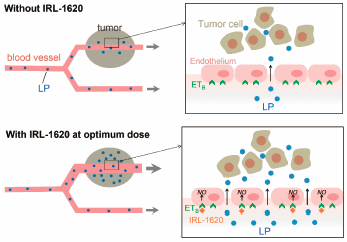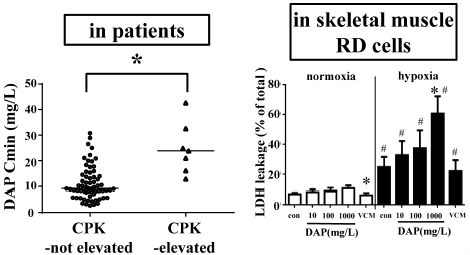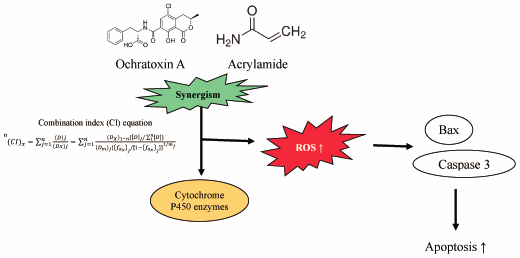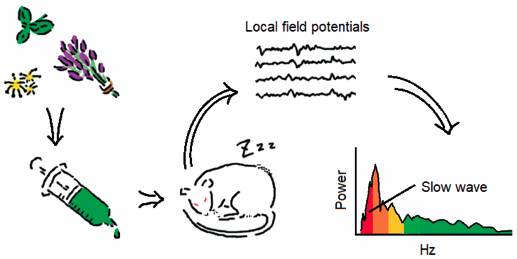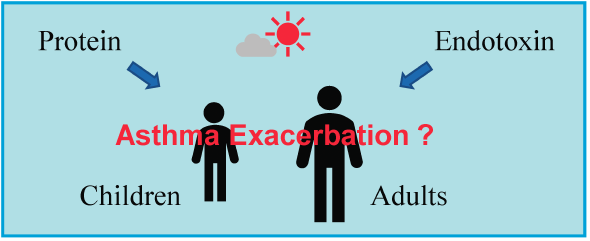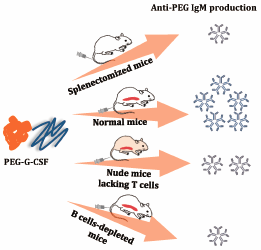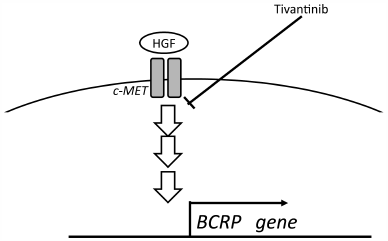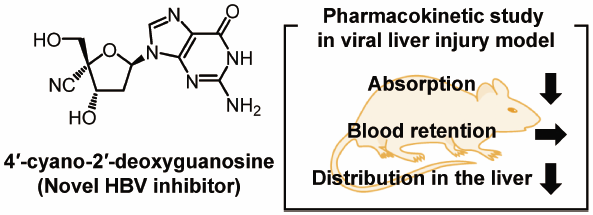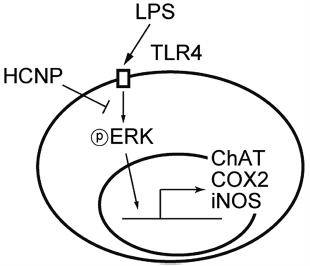- |<
- <
- 1
- >
- >|
-
 2020Volume 43Issue 9 Pages 1293-1300
2020Volume 43Issue 9 Pages 1293-1300
Published: September 01, 2020
Released on J-STAGE: September 01, 2020
Editor's pickKnowledge of the intestinal absorption of nucleobases and analogs has accumulated, as is generally the case, mainly from studies using non-primate experimental animals. However, the recent identification of sodium-dependent nucleobase transporter 1, which plays a major role in their absorption in such animals, has led to exposing the fact that this important transporter is genetically missing in humans. To help to embark on efforts now needed to elucidate the mechanism of intestinal absorption of nucleobases and analogs in humans, which could be totally different from that in non-primate experimental animals, this article presents a comprehensive review on relevant knowledge and issues.
Download PDF (572K) Full view HTML
-
2020Volume 43Issue 9 Pages 1301-1305
Published: September 01, 2020
Released on J-STAGE: September 01, 2020
Download PDF (1191K) Full view HTML
-
2020Volume 43Issue 9 Pages 1306-1314
Published: September 01, 2020
Released on J-STAGE: September 01, 2020
Download PDF (5713K) Full view HTML -
 2020Volume 43Issue 9 Pages 1315-1323
2020Volume 43Issue 9 Pages 1315-1323
Published: September 01, 2020
Released on J-STAGE: September 01, 2020
Editor's pickVascular dementia (VD) is a common neurodegenerative disease, in the progress of which neuroinflammation and beta-amyloid (Aβ) deposition act as vital elements. In this study, lots of Aβ and nod-like receptor protein 3 (NLRP3) inflammasome were found in VD rats’ brains induced by bilateral common carotid artery occlusion. A traditional Chinese medicine-Shechuangzi (osthole) extracted from the fruit of Cnidium monnieri (L.) possesses multiple pharmacological characteristics. This study has been proved the effect of osthole on VD rat evidenced by improving the behavior function, inhibiting the activation of microglia and reducing NLRP3 content, as well as decreasing the Aβ formation.
Download PDF (5004K) Full view HTML -
2020Volume 43Issue 9 Pages 1324-1330
Published: September 01, 2020
Released on J-STAGE: September 01, 2020
Download PDF (602K) Full view HTML -
2020Volume 43Issue 9 Pages 1331-1337
Published: September 01, 2020
Released on J-STAGE: September 01, 2020
Download PDF (4802K) Full view HTML -
2020Volume 43Issue 9 Pages 1338-1345
Published: September 01, 2020
Released on J-STAGE: September 01, 2020
Advance online publication: June 23, 2020Download PDF (792K) Full view HTML -
 2020Volume 43Issue 9 Pages 1346-1355
2020Volume 43Issue 9 Pages 1346-1355
Published: September 01, 2020
Released on J-STAGE: September 01, 2020
Editor's pickThe toxicity of each ochratoxin A and acrylamide is known but there is uncertainty about the cumulative toxicity of two compounds. In this research, Pyo et al. demonstrated that there is a synergistic relationship between ochratoxin A and acrylamide that raises oxidative stress, reduces antioxidant enzymes and causes apoptosis, exacerbating liver and kidney toxicity. These findings indicate that the risk could be increased further by the food-borne toxicant 's interaction with the toxicant produced during processing.
Download PDF (1581K) Full view HTML -
2020Volume 43Issue 9 Pages 1356-1360
Published: September 01, 2020
Released on J-STAGE: September 01, 2020
Download PDF (1313K) Full view HTML -
2020Volume 43Issue 9 Pages 1361-1366
Published: September 01, 2020
Released on J-STAGE: September 01, 2020
Download PDF (590K) Full view HTML -
 2020Volume 43Issue 9 Pages 1367-1374
2020Volume 43Issue 9 Pages 1367-1374
Published: September 01, 2020
Released on J-STAGE: September 01, 2020
Editor's pickCrocetin is a major bioactive component in saffron (Crocus sativus L.) and it has favorable cardiovascular protective effects. This study investigated the regulative effects of crocetin on L-type Ca2+ current (ICa-L), contractility, and the Ca2+ transients in rat ventricular cardiomyocytes using patch-clamp technique and Ion Optix system. The results indicated that crocetin inhibited ICa-L, intracellular Ca2+ concentration and contractility of cardiomyocytes. Crocetin (600 μg/ml) reduced cell shortening and the crest value of the ephemeral Ca2+ by 28.6 ± 2.31%, 31.87 ± 2.57%, respectively. These findings reveal that crocetin could be a potential calcium blocker for the treatment of cardiovascular disease.
Download PDF (1038K) Full view HTML -
2020Volume 43Issue 9 Pages 1375-1381
Published: September 01, 2020
Released on J-STAGE: September 01, 2020
Download PDF (5275K) Full view HTML -
2020Volume 43Issue 9 Pages 1382-1392
Published: September 01, 2020
Released on J-STAGE: September 01, 2020
Download PDF (781K) Full view HTML -
2020Volume 43Issue 9 Pages 1393-1397
Published: September 01, 2020
Released on J-STAGE: September 01, 2020
Download PDF (436K) Full view HTML -
 2020Volume 43Issue 9 Pages 1398-1406
2020Volume 43Issue 9 Pages 1398-1406
Published: September 01, 2020
Released on J-STAGE: September 01, 2020
Advance online publication: June 25, 2020Editor's pickNiemann-Pick diseases are classified into types A/B and C and early definitive diagnosis of them is important for better prognosis of the diseases. The authors developed a novel diagnostic screening strategy for Niemann-Pick diseases using a combination of serum concentrations of N-Palmitoyl-O-phosphocholine-serine and sphingosylphosphocholine based on analyses by liquid chromatography/tandem mass spectrometry. In this study, a rapid method and a validated analysis were developed. The former was useful for screening and the latter were useful for differentiation of Niemann–Pick diseases. This strategy may be useful for screening of Niemann-Pick diseases in clinical practice.
Download PDF (935K) Full view HTML -
2020Volume 43Issue 9 Pages 1407-1412
Published: September 01, 2020
Released on J-STAGE: September 01, 2020
Download PDF (1238K) Full view HTML -
2020Volume 43Issue 9 Pages 1413-1420
Published: September 01, 2020
Released on J-STAGE: September 01, 2020
Download PDF (9920K) Full view HTML
-
2020Volume 43Issue 9 Pages 1421-1425
Published: September 01, 2020
Released on J-STAGE: September 01, 2020
Download PDF (557K) Full view HTML -
2020Volume 43Issue 9 Pages 1426-1429
Published: September 01, 2020
Released on J-STAGE: September 01, 2020
Download PDF (460K) Full view HTML -
2020Volume 43Issue 9 Pages 1430-1433
Published: September 01, 2020
Released on J-STAGE: September 01, 2020
Download PDF (496K) Full view HTML
- |<
- <
- 1
- >
- >|


